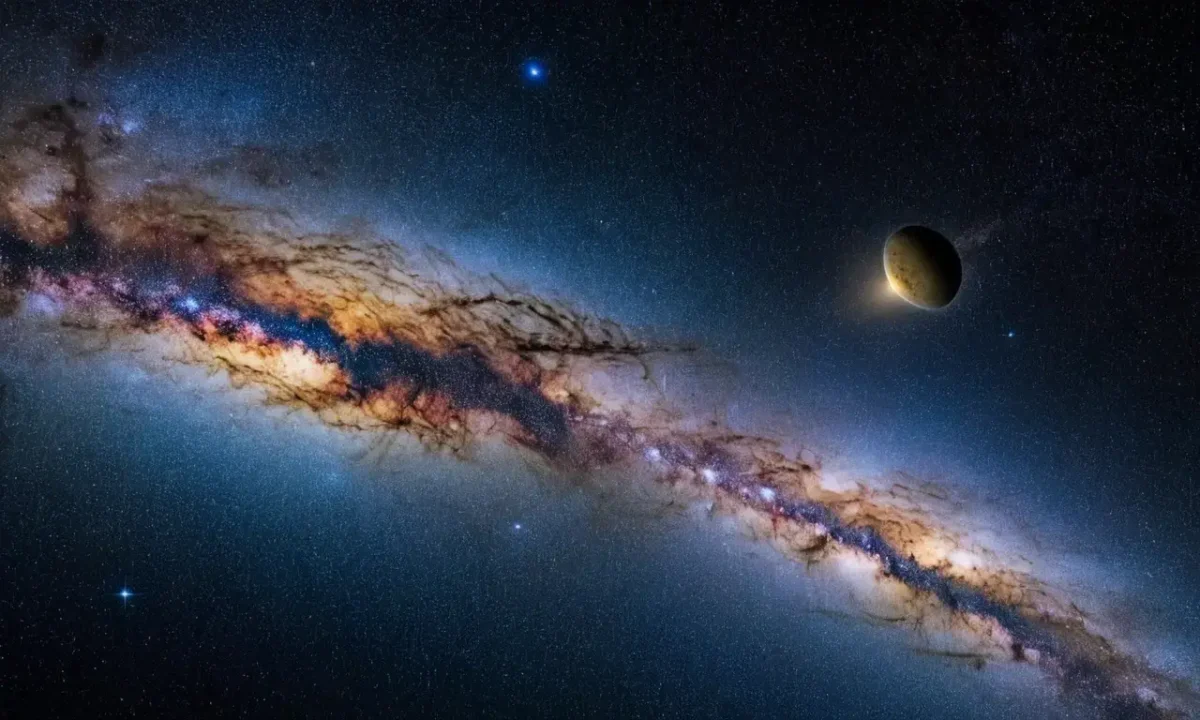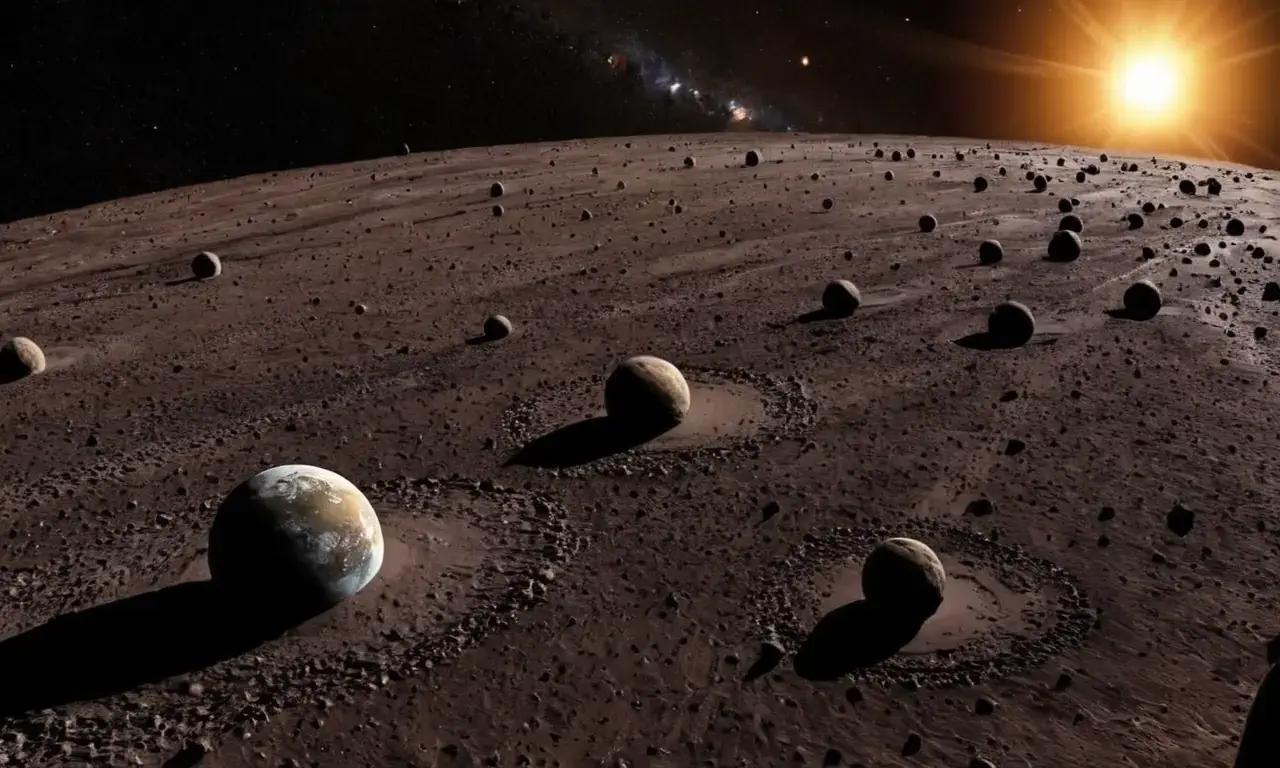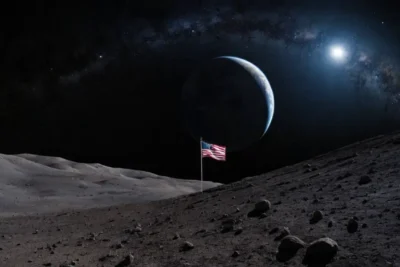
Asteroid Belt: Formation, Hazards and Impact on Life

The asteroid belt, a region spanning between Mars and Jupiter in our solar system, is home to a vast number of rocky bodies known as asteroids. These celestial objects, ranging from small pebbles to dwarf planets, have captivated astronomers and scientists for centuries due to their intriguing composition, potential hazards, and role in shaping the evolution of life on Earth. This article delves into the formation of the main belt, its composition, the influence of planets like Mars and Jupiter, the risks posed by asteroids, and its impact on our understanding of planetary development. We will also explore how these celestial objects have shaped life on Earth and the ongoing efforts to study them for future space exploration and resource extraction.
The primary objective of this article is to provide a comprehensive overview of the asteroid belt, covering its formation, composition, hazards, and significance in the context of our solar system's history and future. By exploring these aspects, we aim to shed light on the fascinating world of asteroids and their role in shaping our understanding of space exploration and life itself.
Asteroid Belt Formation and Composition
The asteroid belt is a remnant from the early stages of our solar system's formation. As the Sun coalesced, it drew in vast amounts of gas and dust, forming the planets and other celestial bodies we observe today. During this chaotic period, leftover material formed a disk around the young Sun, known as the protoplanetary disk. This disk was not uniform; instead, regions of denser material clumped together, eventually forming the planets like Earth and Mars.
The asteroid belt is located in the region between these two planets due to the gravitational influence of both. The inner part of this belt is dominated by smaller asteroids, while the outer region contains larger bodies with more complex compositions. These differences are attributed to the varying densities of materials within the protoplanetary disk and subsequent interactions between objects.
The composition of asteroids varies significantly depending on their location in the asteroid belt. Closer to the Sun, where temperatures are higher, we find asteroids primarily composed of rock and metal. These "carbonaceous" asteroids contain organic molecules like water and methane, suggesting they may have played a role in the formation of life on Earth. In contrast, asteroids further away from the Sun tend to be more metallic, with compositions dominated by iron and nickel.
The presence of different types of asteroids also reflects the diverse processes that shaped our solar system. For example, the impact of large bodies like Theia, which is believed to have collided with the early Earth, may have contributed to the formation of the Moon. Studying these objects provides valuable insights into the history of our planet and the evolution of life itself.
The Role of Mars and Jupiter in the Belt
The asteroid belt's existence is heavily influenced by the gravitational interactions between planets like Mars and Jupiter. These giant planets exert a significant influence on the distribution of asteroids within the belt, creating distinct regions with varying densities and compositions.
Mars, located closer to the Sun than Earth, has a weaker gravitational pull compared to Jupiter. This difference allows for a more stable asteroid belt region around the planet. However, Mars's gravity also plays a role in shaping the orbital paths of asteroids, influencing their trajectories and potentially contributing to collisions between objects.
Jupiter, on the other hand, exerts a much stronger gravitational influence on the asteroid belt. Its massive size creates a "gravity well" that pulls in asteroids from all directions. This effect is particularly pronounced near Jupiter's orbit, where the density of asteroids is significantly higher than in other regions.
The interplay between Mars and Jupiter's gravity has significant implications for space exploration. Understanding these gravitational interactions can help scientists predict asteroid trajectories and develop strategies for mitigating potential hazards posed by these objects. Furthermore, studying the dynamics of the asteroid belt provides valuable insights into the formation and evolution of our solar system as a whole.
Potential Hazards and Mitigation Strategies
The presence of numerous asteroids in the asteroid belt poses significant challenges to space exploration efforts. These objects can pose a threat to spacecraft and astronauts if they collide with them, potentially causing damage or even catastrophic destruction.
One of the most prominent hazards is the risk of asteroid impacts on Earth. While the likelihood of such an event occurring remains relatively low, it highlights the importance of developing robust mitigation strategies. One approach involves deflecting asteroids using kinetic impactors, which are spacecraft designed to collide with and alter the trajectory of potentially hazardous objects.
Another strategy involves deploying "gravity tractors," large spacecrafts that use their gravitational pull to nudge asteroids away from Earth's path. These technologies offer promising solutions for mitigating potential threats posed by asteroids in the future. However, developing these technologies requires significant research and development efforts before they can be implemented on a large scale.
Furthermore, ongoing monitoring of asteroids is crucial for early detection and mitigation. Space agencies like NASA actively track potentially hazardous objects using telescopes and ground-based observatories. This information allows scientists to develop strategies for deflection or planetary defense in case an asteroid poses a significant threat.
Impact on Life and Planetary Evolution

The asteroid belt has played a vital role in shaping life on Earth. The impact of large asteroids, known as "Chicxulub" event, is believed to have wiped out the dinosaurs approximately 66 million years ago. This catastrophic event marked a turning point in Earth's history, leading to significant changes in ecosystems and biodiversity.
The presence of organic molecules within some asteroids suggests that these objects may have played a role in the formation of life on Earth. For example, water-rich asteroids could have delivered essential ingredients for early life forms. Furthermore, the impact of asteroids has shaped planetary surfaces, contributing to the creation of craters and other geological features.
Studying the composition of asteroids provides valuable insights into the origins of life on Earth. By analyzing their chemical makeup, scientists can gain a better understanding of the building blocks of life and how they may have been transported across the solar system. This knowledge is crucial for future space exploration missions that aim to explore other planets or moons in our solar system.
Asteroids and the Extinction Event
The asteroid belt's history is intertwined with the extinction event that wiped out the dinosaurs approximately 66 million years ago. The Chicxulub impact, caused by a massive asteroid colliding with Earth near the Yucatan Peninsula, is widely believed to be responsible for this catastrophic event.
This impact triggered a chain reaction of events, including tsunamis, wildfires, and global cooling. These factors combined led to the extinction of approximately 76% of plant and animal species on Earth at that time. The asteroid's immense energy also ejected vast amounts of dust into the atmosphere, blocking sunlight and disrupting photosynthesis. This prolonged darkness ultimately led to a significant decline in biodiversity.
While the exact details of this event are still being investigated, the asteroid belt provides valuable clues about the potential hazards posed by these objects. Studying asteroids can help scientists develop strategies for mitigating future impacts and protecting life on Earth from potentially catastrophic events.
Ongoing Research and Future Exploration
The study of asteroids continues to be a vibrant area of research in astronomy and planetary science. Scientists are constantly developing new techniques and technologies to better understand these celestial bodies, their origins, and their potential impact on our planet.
One promising area of research is the development of advanced robotic missions designed to explore asteroids up close. These missions will provide valuable data about the composition, structure, and history of these objects, helping scientists answer fundamental questions about the formation of our solar system. For example, future missions like NASA's OSIRIS-REx mission are focused on collecting samples from asteroid Bennu for detailed analysis back on Earth.
Furthermore, ongoing research into the potential resources found within asteroids could revolutionize space exploration and resource utilization. Asteroids contain valuable materials such as water ice, metals, and rare earth elements that could be used to fuel future missions or create new technologies. As our understanding of these objects grows, so too will our ability to harness their potential for the benefit of humanity.
Conclusion
The asteroid belt is a fascinating region in space with a rich history and ongoing scientific significance. Its presence has shaped life on Earth through past impacts and continues to inspire research into planetary defense and resource utilization. As we continue to explore this dynamic region, we will undoubtedly uncover even more secrets about our solar system and the universe beyond.
Leave a Reply





Related Links